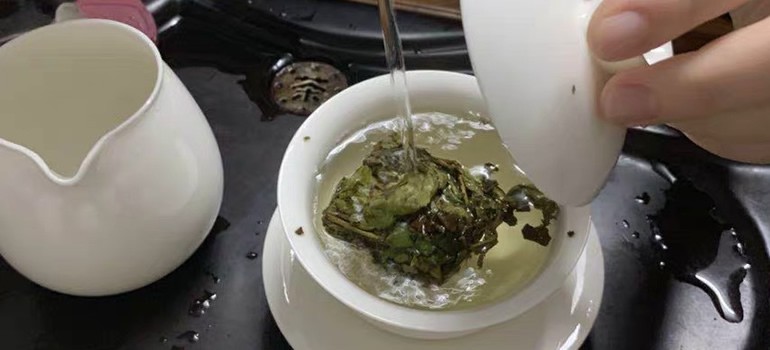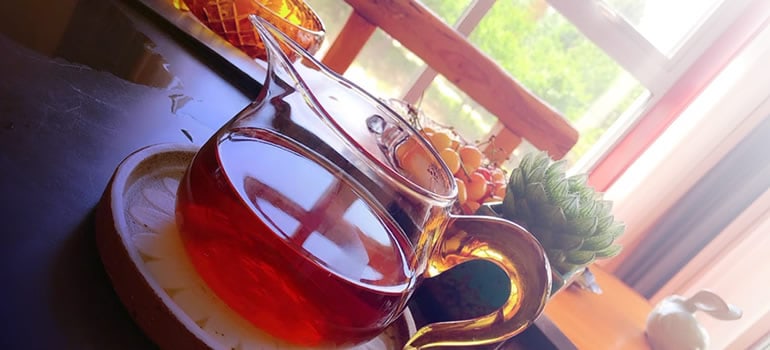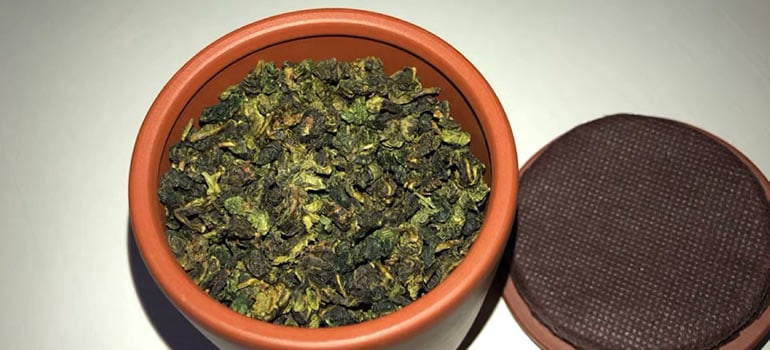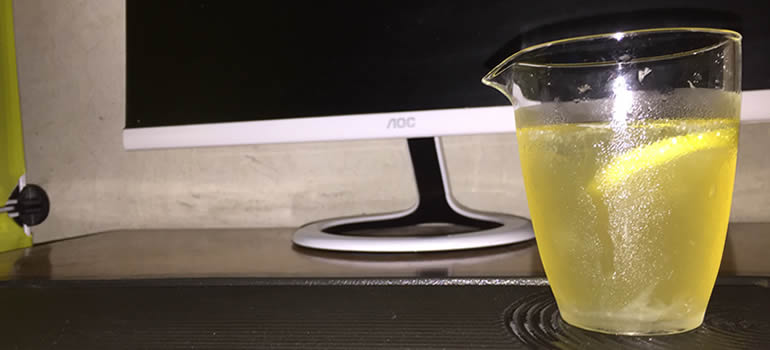
You are either team coffee or team tea.
Both of these are some of the most widely consumed drinks in the whole world.
But which one is best is hard to say.
And as you can expect with anything so widely used there are a lot of studies done on both tea and coffee. Multiple data shows their advantages and disadvantages, health benefits, and side effects.
Although there are some similarities, there are also a lot of differences between the two.
So how different are tea and coffee? Both tea and coffee are produced and derived from different plants and undergo different processing methods. Because of that, they have different nutrients, caffeine, and antioxidant content. They have different aroma and flavor, which are unique for each type of tea and coffee.
As you can see, they are very, very different.
If you are curious to find out more, read on, as below, I get into more detail and give you some hard and fast facts about what separates tea and coffee so much.
So without further ado, let’s dive in.
The Difference in the Cultivation and Processing Methods
Let’s start with the basics. The cultivation and preparation methods are going to be some of the most glaring differences between the two.
Coffee Cultivation and Production Methods
Coffee is a beverage that is produced from the fruit of the coffee plant.
The fruit of the coffee plant is known as a coffee cherry.
Interestingly enough, it takes a lot of time until the plant can be harvested. The coffee plant starts producing flowers after three to four years, and then it takes another five years for these flowers to produce the coffee cherry.
However, we don’t need the whole fruit. The pulp is usually removed, which leaves just the coffee seed (the bean).
The coffee beans then undergo different types of processing, which alter the taste, aroma, and strength of the coffee significantly.
There are three main coffee processing methods:
- Dry processing – This method is known as natural or unwashed processing. The coffee cherries are harvested and then sun-dried. This is a process that can take up to a month before the coffee cherries are ready. This method produces smooth coffee, with rich texture and full-bodied flavor.
- Wet processing – During the wet processing method, the pulp of the coffee cherrie is removed through the use of water and machinery, after which they are dried. This method produces coffee that has a balanced, cleaner flavor, that is very vibrant and fruity notes.
- Semi-dry processing – This is a hybrid process during which most of the layers surrounding the coffee beans are stripped away mechanically, and then they are left to dry. This method produces coffee that has a distinct earthy and complex texture, which is mildly acidic.
Tea Cultivation and Production Methods
If you think that coffee production and processing are complicated, wait until you see what happens with tea.
Unlike coffee, tea is produced not by seed but by leaves.
First, there are different types of tea. However, only teas made from the leaves of the Camellia sinensis plant are considered a true tea. These include:
- White tea – White tea has a very mild and slightly sweeter taste.
- Yellow tea – Yellow tea has a well-balanced, very vibrant, and floral flavor that is not too weak or too strong.
- Green tea – The taste of green tea can vary from bittersweet, vegetal, or floral to very nutty and even sweet.
- Black tea – Black tea has a very strong, full-bodied, rich taste. It is usually dark, strong, and malty.
- Oolong tea – Oolong tea can vary significantly in its taste qualities, depending on the amount of processing it has undergone. Its taste can range from sweet to bitter and from floral to vegetal. It can be very rich or very mild in flavor.
- Pu-erh tea – The taste of Pu-erh tea can vary from very mellow and woody to somewhat bitter and astringent.
There is also a variety of other types of teas:
- Herbal teas – Also known as tisanes. They are made from herbs and spices.
- Fruity teas – They are made from dried fruits and berries.
Just like coffee, what separates the different kinds of tea is the type and amount of processing it undergoes.
Although most of the teas go through very similar processing with only slight differences, tea processing steps and techniques can be very complicated. Generally speaking, teas go through:
- Harvesting – Tea leaves and buds are plucked twice a year, which is typically done manually but can also be done with machines.
- Withering – After the tea leaves are harvested, they undergo a process of withering or wilting. During this process, the tea leaves are dried. They can also start to oxidize a little.
- Disruption – During this process, tea leaves are either broken down into smaller pieces or bruised lightly. This is done to promote and speed up the oxidation process.
- Oxidation – The amount of oxidation is very important as this is what impacts the taste and flavor of tea to the greatest extent. The different teas can undergo different amounts of oxidation ranging from 4% up to 100%.
- Fixing – This process is used by the manufacturers to stop the oxidation process at a certain desired level. The way this happens is by lightly heating the leaves.
- Rolling – During this process, the leaves are shaped into the end product.
- Yellowing – This process is unique to the yellow tea and is responsible for the distinct yellow tint of the tea. This is done by warming the damp leaves for several hours in a closed container.
- Drying – Drying is often the last process which tea undergoes. It is a finishing process that is preparing the tea ready for sale. This can be done by panning, air drying, or baking.
The Difference in the Caffeine Content
Let me start by saying that not all caffeine is created equal. You may think to yourself, “Well, caffeine is caffeine. What is there to be different about it?”
And you will be right to a certain degree. However, the caffeine in tea does not act in much the same manner as the caffeine found in coffee.
I myself like coffee, but I don’t like the energy crash that comes after it. However, when I drink tea, I don’t experience the same outcome.
Why so?
Well, interestingly enough, it seems that the caffeine in tea binds to the antioxidants in it. And by doing so, it is absorbed and released in our body at a slower rate.
In other words, if you compare a cup of coffee with a cup of tea that has the same caffeine content, you will feel different after each one.
The caffeine in tea will have less of an impact initially but generally will last longer, and you will not experience the same energy crash.
Another thing that separates tea and coffee is the average caffeine content per cup.
With coffee being the leading choice for many, early in the morning, one would think that tea doesn’t have a lot of caffeine in it.
But is that really the case?
Let’s take a look.
The Caffeine Content in Tea
There are a few different types of tea: the true tea (made from the leaves of the Camellia sinensis plant), herbal tea (also known as a tisane) and decaf teas.
1. Camellia Sinensis Tea
Any tea made from the Camellia sinensis leaves will contain caffeine.
The actual amount of caffeine, however, will vary depending on the processing methods used in the tea’s preparation.
Some teas go through high amounts of processing and oxidation and in some instances, even fermentation. This is why although they come from the same plant, they will vary significantly in terms of taste, flavor, nutrient content, and even caffeine content.
Depending on the individual differences in the preparation of the tea and its variety, even two black teas may have different caffeine content.
Also, how you prepare your tea can affect the caffeine content, as well. For example, the amount of tea used, brewing, and steeping time and temperature can all affect the caffeine content.
Let’s take a look at some of the most widely used teas and their average caffeine content:
- White tea: 10 to 30 mg
- Yellow tea: 33 mg
- Green tea: 30 to 50 mg
- Oolong tea: 37 to 55 mg
- Black tea: 40 to 80 mg
- Matcha tea: 80 mg
2. Decaf Tea
Usually, you can find decaf versions of almost any kind of tea.
However, decaf tea is not entirely caffeine-free. Although in smaller amounts, decaf tea usually still retains about 3 to 5% of its original caffeine content.
- Decaf tea: 1-8 mg
3. Herbal and Fruity Teas
And last but not least, I want to mention herbal and fruity teas.
Since they are prepared with different plants, roots, fruits, and herbs, they don’t actually contain any caffeine in them.
- Herbal tea: 0 mg
The Caffeine Content in Coffee
As you can see, tea can be a wild card. It can be completely devoid of caffeine, and it can also have a LOT of caffeine rivaling even coffee.
However, coffee is not much different. The different brands and types of coffee can contain varying amounts of caffeine.
The preparation methods and the processing coffee beans have undergone can also add a lot of variables to the equation.
1. Regular Coffee
The amount of caffeine in coffee will vary a lot, depending on where you buy it from and how it has been prepared. On average, you can expect it to have a lot more caffeine than tea.
- Coffee: 62 to 100 mg
2. Decaf Coffee
Much like decaf tea, decaf coffee also contains caffeine, so it is not entirely devoid of it.
- Decaf coffee: 2 mg
3. Cold-brew Coffee
Cold brew coffee is not iced coffee.
Cold-brew goes through a different preparation method, which involves steeping the coffee beans in water.
The interesting thing about cold brew coffee is that the ratio of coffee to water is higher. This leads to coffee, which tends to be a lot more potent.
- Cold brew coffee: 102 to 183 mg
The Difference in the Nutrient Compounds
Since tea and coffee are quite different, to begin with, we can reasonably expect them to have different nutrient compounds.
This is a tricky subject as despite the extensive studies and research we have done on both tea and coffee, there are still a lot of unknowns.
Compounds in Tea
Tea is a rich source of polyphenols containing about 30,000 different polyphenol compounds, which are natural antioxidants.
Tea also contains tiny amounts of various minerals and vitamins like the:
- Vitamin C;
- Carotene;
- Vitamin B1;
- Vitamine B6
- Potassium;
- Folic Acid
- Calcium;
- Iodine;
- Selenium;
- Manganese; and
- Fluoride.
Tea also contains L-theanine, which is an amino acid.
Compounds in Coffee
The most important and well-known compound in coffee is caffeine. On average, a regular cup of coffee contains more caffeine than tea.
If you thought that tea has a lot of polyphenols, wait until you see this. Coffee contains as much as 2.5 as many polyphenols as tea does.
There is also a variety of other antioxidants like chlorogenic acid and melanoidins.
As a result, many people are getting the majority of their antioxidants from coffee rather than from veggies and fruits.
Coffee contains various minerals and vitamins like:
- Vitamin B2 (Riboflavin);
- Vitamin B5 (Pantothenic acid);
- Vitamin B3 (Niacin);
- Manganese;
- Potassium;
- Magnesium;
- Calcium;
- Iron, and more.
Coffee also contains other chemical compounds (known as diterpenes) like the:
- Cafestol; and
- Kahweol.
The Difference in the Health Benefits
Tea is a highly studied topic, and the documented health benefits of it have been steadily growing for the past several years.
Some experts even say that it almost seems like there is no downside to drinking tea.
Health Benefits of Tea
Tea has been associated with a vast number of different health benefits, among which are:
- May improve brain health, alertness, and function;
- May improve mood
- Positive effect on memory;
- Can help in losing weight;
- It can also potentially help in improving cholesterol levels;
- May lower the risk of developing Alzheimer’s and Parkinson’s
- May reduce the risk of specific types of cancer;
- May reduce the risks of cardiovascular disease;
- Tea has antibacterial properties;
- Tea may help to prevent tooth loss;
- May lower the risks of developing type 2 diabetes; and
- May decrease all-cause mortality.
Depending on the type of tea you are drinking and the processing methods used in its production, these may vary a lot.
Health Benefits of Coffee
- The high caffeine content of coffee can significantly boost your energy levels and brain function;
- Coffee can improve your mood;
- Caffeine can be used to boost one’s physical and strength performance;
- Caffeine can potentially raise your metabolic rates by 3 to 11 percent effectively leading to more burned calories;
- Coffee can help reduce the chances of developing some types of cancer;
- Coffee may protect your liver from cirrhosis;
- It can potentially lower the risk of Type 2 Diabetes;
- Coffee drinkers have a lower risk of developing Alzheimer’s and Parkinson’s disease; and
- It may also reduce all-cause mortality;
The Difference in the Side Effects
As you will see, both beverages, if consumed in excessive amounts, can and will have specific side effects.
However, there are some slight differences between the two beverages that can be very important to certain people.
Side Effects of Tea Consumption
Even though tea can improve our health and well-being in numerous ways, it is not without its own ill effects.
This is why it should be consumed in moderation.
- The caffeine in tea can cause difficulty sleeping and restlessness;
- The caffeine in tea can be addictive;
- The caffeine may leave you dehydrated;
- The caffeine content can make you experience increased heart rate and anxiety;
- Tea can cause iron-deficiency anemia;
- Tea can also have a diuretic effect;
- Tea is not recommended for pregnant women as it may cause miscarriage due to potential high caffeine content;
- The fluoride which can be found in tea may cause skeletal fluorosis; and
- The caffeine in tea can cause cardiovascular problems in some people.
Side Effects of Coffee Consumption
Drinking too much coffee definitely has been proven to lead to some adverse side effects. These are usually connected with its high caffeine content.
- It can lead to anxiety, nervousness, and jitteriness;
- It can cause increased breathing and heartbeat;
- It can lead to insomnia, difficulty sleeping and decreased sleeping time;
- Coffee can cause digestive problems;
- Coffee can be addictive;
- Unfiltered coffee can increase the levels of triglycerides and LDL cholesterol (which is the bad kind of cholesterol).
- It can cause headaches;
- It is not safe for pregnant women due to the risk of high caffeine intake;
- Coffee has a strong diuretic effect;
- It can cause high blood pressure; and
- After the energy-boosting effect subsides, this can lead to increased levels of fatigue and tiredness.
Resources:
www.healthline.com/nutrition/caffeine-in-green-tea
http://www.caffeine-content.com/caffeine-in-tea/caffeine-in-white-tea/
http://www.coffeeresearch.org/agriculture/flavor.htm




